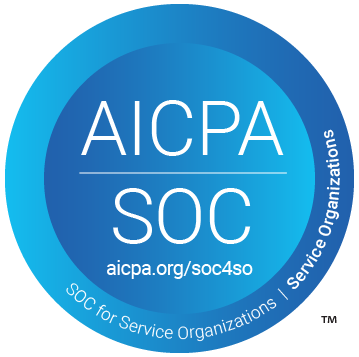Keeping warehouse teams motivated is more important than ever, especially as labor shortages and high turnover continue to challenge the industry. Forward thinking managers are now leaning into employee engagement ideas for warehouses ranging from warehouse gamification and incentive programs to regular warehouse employee events, as a way to boost morale and retention. The right incentive ideas for warehouse workers can foster a sense of ownership, improve productivity, and make day-to-day operations feel more rewarding for everyone involved.
One of the biggest challenges faced by the logistics industry this century is an unmotivated workforce. Besides issues with recruitment and retention, many warehouse managers wonder how much efficiency is lost due to their team being unhappy or unfocussed at work.
There’s plenty of talk about the different expectations of younger generations, or precarious living standards brought about by problems like inflation. But what’s often brushed over is how warehouses might adapt to this new reality, and take matters of workforce morale into their own hands.
So which strategies actually work?

Warehouse Employee Tracking: Is It Worth It?
Some companies take what we might call a ‘low-trust’ approach to productivity.
Through the use of software and connected devices, it’s possible to monitor employees’ every move, measure their individual performance and push them to hit certain efficiency targets, all with minimal intervention by a human manager.
These systems appear to get results - particularly for mega-companies like Amazon that can leverage their tech leadership and scale. Such companies circumvent the ‘motivation problem’ and the ‘turnover problem’ entirely, as they can be relatively confident of getting an acceptable level of performance out of a fresh hire with minimal experience.
But trying to replicate this success is fraught with danger:
- A recent study found that “monitored employees were substantially more likely to take unapproved breaks, disregard instructions, damage workplace property, steal office equipment, and purposefully work at a slow pace.”
- Researchers in the UK have also found that closely tracking warehouse employees’ behaviors results in “extreme stress and anxiety,” and “there have been issues with joints and health problems.”
- An EU study found that the use of “machines, systems, or computers monitoring workers’ performance” was associated with greater psychosocial risk factors. It also found that while data analytics technologies improved performance, establishments that used them for “process improvement only” significantly outperformed those that used them for “employee monitoring only”, and without the negative impact on worker wellbeing.
- A paper published in the California Law Review concluded that “while employers have a reasonable interest in ensuring worker productivity and in dissuading misconduct in the workplace, that interest does not outweigh the human right to privacy and personal liberty”
Rather than going down the same path as companies like Amazon, warehouses should aim to make a better offer. That might mean taking the opposite approach: engaging workers, building trust with them, and using data analytics for process improvement rather than tracking their people.

Warehouse Gamification or Warehouse Culture?
Gamification is a similar application for connected devices assigned to individual workers. It often goes hand-in-hand with employee monitoring, but in theory it can be implemented on its own, avoiding the more obviously contentious aspects of this technology.
In such a configuration, workers could earn points or medals for hitting milestones or achieving certain goals. These might be tied to real-life incentives, or they might not, but in any case the intention is to introduce an element of healthy competition into the workplace and make the workday more enjoyable.
Unfortunately, in practice such gamification efforts tend to fall short of their intended goals. One fundamental reason is that healthy competition isn't something that can be imposed from above. It must emerge spontaneously, rooted in the genuine motivation and enthusiasm of the employees themselves.
When it's artificial, workers are more likely to feel pressured rather than inspired, which might result in a counterproductive environment. Instead of fostering camaraderie and a sense of achievement, gamification can lead to increased stress, strained relationships, and a narrow focus on personal metrics at the expense of broader warehouse goals.
A strong warehouse culture, emerging naturally and rooted in trust, will prove more effective. This kind of environment naturally drives collaboration and genuine motivation, outpacing any contrived gamification.

Employee Engagement Ideas For Warehouses
Building a high-trust, high-motivation team starts with engagement. So how do you engage workers?
- Values-based goals. It’s sensible to communicate hard metrics to the team as a whole. But when it comes to coaching individuals, qualitative feedback goes further. Highlighting how their performance contributes to the effectiveness of the facility overall, acknowledging their progress and future potential, and recognizing their unique strengths all go further than a purely quantitative review.
- Incentive Programs. Offer tangible rewards for specific milestones or achievements. Tether it to meaningful measures of warehouse performance, and communicate the impact clearly, so they can take real pride in hitting targets rather than just chasing a number.
- Asking for Feedback. Regularly gather input directly from the workers about workflow, tools, or processes. Adjustments made based on their insights can improve overall efficiency and job satisfaction.
- Off-sites. Give workers an opportunity to build connections with each other and their supervisors. Activities should be crafted with the team's input and should be voluntary, and should have a clear purpose.
- Training and Development. Identify opportunities for new skill acquisition on the job. Help team members find a pathway towards higher earnings in the future.

Warehouse Team Building Activities and Off-Sites
Everything improves when there’s trust and respect between warehouse workers, supervisors, and managers. Retention and productivity go up, problems and absenteeism go down.
It’s a natural idea to do something together other than working. Many warehouses don’t bother because it’s so unlikely that much of the team will stick around for very long. Others try it but are wary of spending too much time or money on something that doesn’t promise results.
The truth is, it’s easier to get it terribly wrong than to get it right. The blue-collar HR experts at Team Engine have found that:
- Workers may feel pressured, explicitly or implicitly, to participate in team-building activities.
- They often find the activities themselves undignifying or cruel.
- The purpose of the activities is sometimes unclear, leading workers to suppose incompetence or fickleness on the part of management.
- Such activities cannot, even in the best case, fix underlying trust issues.
- Workers are typically not asked what activities they’d like to do, and activities are usually not balanced to appeal to different personality types.
- Companies are sometimes reluctant to pick up the tab.
So before embarking on this course, managers need to be clear about what they hope to achieve. If the activities are meant to be social and fun, then the team needs to feel the same way. If they’re meant to develop skills and improve performance, then they ought to be on the company’s time.
In any case, workers need to know what the point is, and why they are being asked to do something that doesn’t directly relate to their job function.

Warehouse Incentive Programs
Incentive programs are often seen as merely dangling a financial carrot in front of employees. But when thoughtfully constructed, they can foster a sense of purpose and collective ambition within a warehouse team.
Start by focusing on shared bonuses. These could be shift-wide, department-wide or even warehouse-wide. The aim is to make every worker feel they're rowing in the same direction. This sense of collective achievement can foster a spirit of camaraderie that individual bonuses usually do not.
When setting the goals for these bonuses, it's essential to strike a balance. Objectives that are too procedural, like increasing pick rate, can be demoralizing because they may be affected by external variables. Instead, tether incentives to a warehouse KPI, like order accuracy. Why? It's a clear metric that each worker can influence, and it's closely tied to customer satisfaction — a win for both the team and the business as a whole.
The steps to implement this would be:
- Choose a KPI and time frame.
- Let the team know the what, why, and when of the bonus program.
- Set up a way to make progress towards the goal visible to the team.
- Regularly ask for feedback or ideas on how the team can hit the goal.
- Reward the team if they hit the goal. Make sure everyone feels like part of the success.
- Review the difficulty of the goal. Was it too easy or too hard? Try to understand why, and adjust as necessary for the next bonus period.
A good incentive program does more than just boost numbers; it creates a motivated, cohesive team that takes pride in its achievements. By rewarding shared successes, warehouses can foster an environment where every individual feels valued.

Training and Development for Warehouse Workers
Few warehouse workers really want to stay in the job for years. Some of them may feel stuck, or doubt that they’ll get the opportunity to do anything else.
Additional knowledge and skills are some of the most valuable things supply chain businesses can give to their blue-collar employees. In theory it’s worth more than marginal extra pay. But there is a degree of doubt on both sides that this knowledge transfer is worthwhile.
Personnel development and trust are more closely intertwined than meets the eye. Supervisors and managers that put the effort in and are honest with their team members will earn some trust. That then creates the possibility of sincere conversations about future career options.
There are plenty of win-wins for those who are willing to look for them, like training employees on quality control, having them learn about equipment maintenance, or showing them how to use dock scheduling or warehouse management software.
Of course, the ideal is something that both helps their future career and helps the warehouse immediately. But that might not always be possible, and a little magnanimity can go a long way in giving workers a reason to show up and work hard every day.

How Dock Scheduling Helps Motivate Warehouse Employees
While the low-trust approach to productivity may seem like the path of least resistance, it might not yield the most desirable results in the long term.
That’s not to say that technology can’t help. On the contrary, tech solutions that make life easier for employees can be instrumental in boosting morale, streamlining operations, and fostering a sense of autonomy among the workforce.
Dock scheduling software is one of those solutions. The efficiency gains it brings in shipping and receiving percolate throughout other warehouse processes. Implemented well, it enables a culture of accountability in the loading dock that is still personal, not robotic. The question is: “how quickly and accurately can we load or unload this truck?” rather than the invasive and distrustful “how many minutes per day do you spend in the bathroom?”
The right technology is also a major enabler of training and development for warehouse workers. Systems they interact with, that give them a certain level of ownership and utility, are the ideal gateway to picking up some fundamental technical skills that might bear fruit in their future careers.
Finally, dock scheduling creates a degree of predictability in shipping and receiving operations that can translate into consistent schedules for employees. Don’t underestimate how meaningful it is to be able to get home on time every day.
For a free consultation about how to get dock scheduling implemented at your facility, give us a call on (+1) 647 848-8250, or go ahead and book a demo with the DataDocks team.



